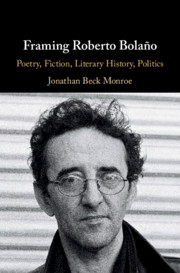Part Three
Published online by Cambridge University Press: 09 September 2019
Summary
Through its fifty-plus narrators and three central characters, the aspiring 17-year-old poet and narrator Juan Garcia Madero and his two “visceral-realist” mentors, Arturo Belano and Ulises Lima, Bolaño’s 1998 The Savage Detectives offers both a parody of the detective novel and an endlessly deferred quest, through the figure of Cesárea Tinajero, for “true” poetry. Radically raising the stakes of Bolaño’s commitment to the development of what a pivotal passage calls “poemas-novela,” its prose-poetic strategies resembling less a novel in the traditional sense than an impossibly sustained assemblage of loosely linked prose poems on an “epic,” in Bakhtin’s sense “novelistic” scale, it challenges the emphasis of the detective novel, and of the novel generally, on a certain violence of narrative emplotment, the monetized violence of narrative drive, of linear narrative, as plot itself. Complicit as Bolaño knows himself to be with the detective genre’s commercial appeal, he understands the legacies of Poe, Baudelaire, and Rimbaud, of detective fiction and the prose poem, as both a “savage” threat to poetry, leading to its “death” and “murder,” and as a potential convergence that makes possible, as the last name of the narrator Amadeo Salvatierra suggests, its rebirth and redemption in manifold forms.
Keywords
- Type
- Chapter
- Information
- Framing Roberto BolañoPoetry, Fiction, Literary History, Politics, pp. 103 - 152Publisher: Cambridge University PressPrint publication year: 2019

